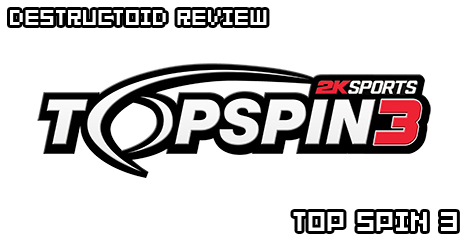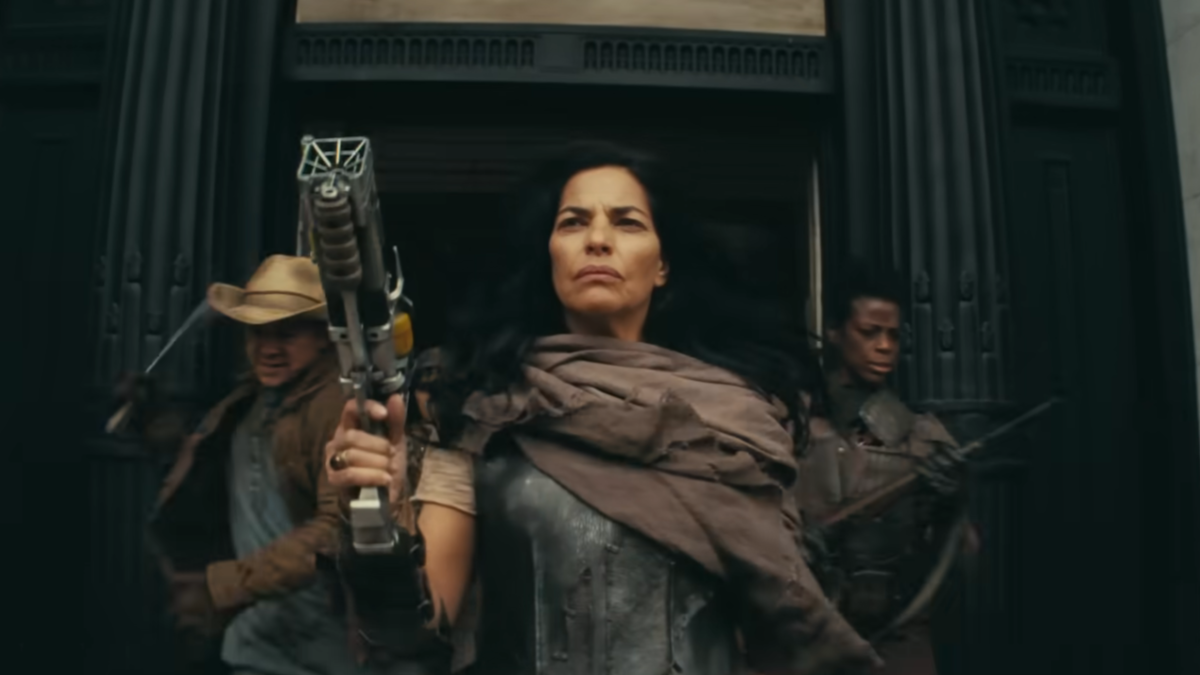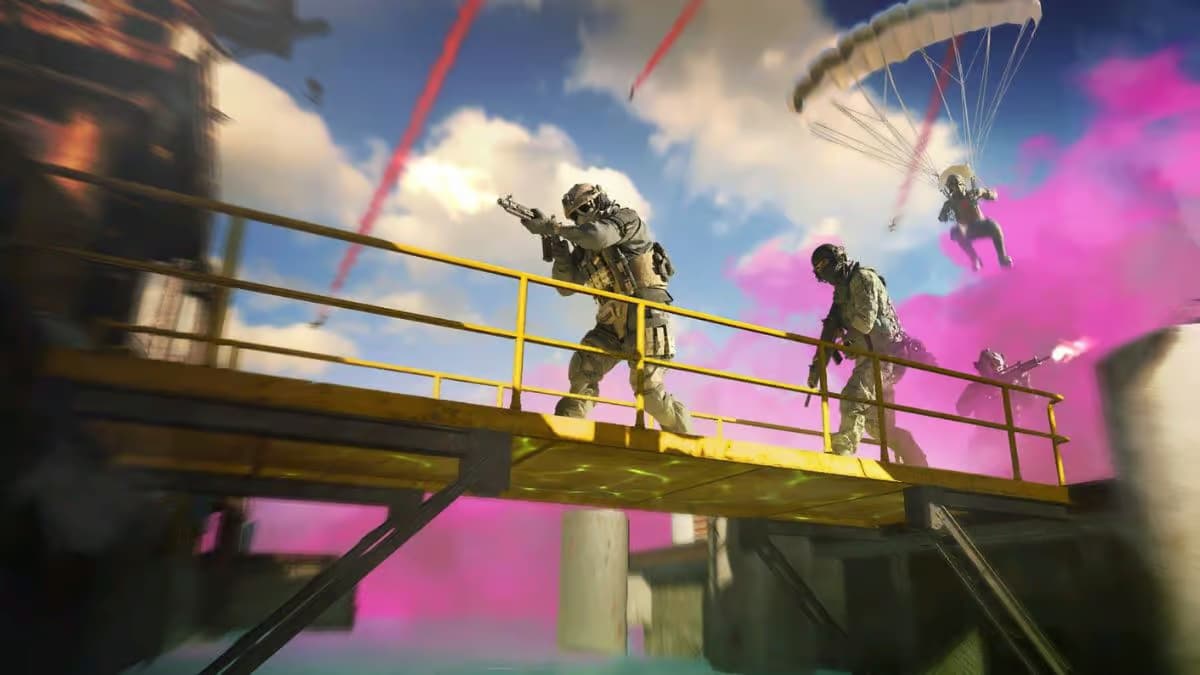Those who watched Sunday’s epic five-set Wimbledon Men’s Singles final between World No. 1 Roger Federer and No. 2 Rafael Nadal saw one for the ages: a match that has already been hailed as the best Wimbledon final, and three-time Wimbledon champ John McEnroe even called it “the greatest match [he’s] ever seen.” Tennis hasn’t ever been as popular in America as, say, football or baseball, but that doesn’t mean that the sport is filled with any less drama, action, or athleticism on the court/field/pitch/what have you.
As for tennis in the videogame realm, 2K Sports’ Top Spin series has taken over the throne of “best tennis sim” from Sega’s Virtua Tennis games, which have more of an arcade feel. Top Spin 3 is the newest iteration of the venerated tennis series, and it aims to be the most realistic portrayal of the sport yet. Hit the jump to find out if it succeeds.

Top Spin 3 (PS3 [reviewed], 360, Wii, DS)
Developed by PAM Development
Published by 2K Sports
Released on June 24, 2008
Top Spin 3 is essentially the antithesis to Wii Sports and its ilk. It’s a sports sim through and through, and it certainly doesn’t pull any punches in bringing you an accurate representation of tennis: the game is fast and furious, with blazing-fast shots whizzing across the court, and it definitely isn’t what you’d call a pick-up-and-play experience. That’s both a good and a bad thing: the gameplay appears simple at face value, but reveals itself to be intricately layered once you spend more time with the game; however, there’s a relatively significant time investment required to learn the game’s ins and outs before you can play with the big boys.
In my developer game notes, I included a statement from Producer Anthony DeLuca where he explained that 2K went “back to the drawing board as far as gameplay.” There’s a new control scheme this time around, and as I’ve noted, it’s difficult to get down at first. The face buttons represent different types of shots: X is a “flat” shot, square is a slice, circle puts topspin on the ball, and triangle offers drop shots or lobs. R1 follows your shot to the net for volleying. L1 “auto-locates” you, and essentially, this works as a speed boost of sorts — hold the button while moving, and you’ll get in better position more quickly to return the next shot. This takes more energy than simply moving with the left analog stick, but I’ll get into that later.
Serving can be controlled by three of the face buttons (square, X, O), but the right analog stick also works, and it works well. You pull back to toss the ball up, and then flick the stick forward to hit the ball (after pulling back, twist clockwise for a slice serve or counterclockwise for a topspin serve). It takes a while to get the timing down, but it’s worth it to see the hilarity that ensues when you don’t time a serve correctly — usually, you’ll whiff and the ball will bop you on the head, but everything depends on the revamped physics engine.

Aiming serves and shots is another thing that you’ll screw up at first. Top Spin 3 utilizes a “hold and release” mechanic for hitting balls: you hold down the respective button for the shot you want to take, and then let go at the proper time. The longer you hold down the button, the harder your shot will be. The instruction manual says to release when the ball bounces on your side of the court, but that’s just a guide that doesn’t apply all the time. You aim shots with the left analog stick — but don’t hold it too long in any particular direction, or you’ll hit the ball out of bounds. For serves, there’s a very small window to time aiming, but at least you’ve got the second serve to fall back on if you screw things up the first time.
Oh, I almost forgot about the triggers. The L2 and R2 buttons are modifiers that provide “risk shots.” Unlike in Top Spin 2, though, there’s no momentum bar; here, your success with risk shots depends completely upon your timing and your player’s position. R2 adds some extra power to your shot, while L2 aims your shot closer to the line. This mechanic doesn’t work as intended, though — it’s entirely too unforgiving. You have to time your risk shots nearly perfectly, or they’ll just end up as unforced errors. I lost count of the number of times I attempted to fire a forehand winner down the line, or tried to bury a slice in the back corner, only to watch helplessly as the shots either died in the net or sailed wide of the lines. So I ended up only messing around with risk shots when I was up by a few points in a game.
As you can see, the control scheme in Top Spin 3 can be a bit overwhelming. It’s great, then, that the game prominently features a great tutorial mode, the Top Spin School. It’s just you and a ball machine, but oh boy, is there plenty of fun and learning to be had! The school is split up into a variety of categories, so you can work on specific parts of your game. And everything’s available at the beginning — so if you have the basics down pat but want to experiment with right analog serving, you can jump right in and do that.

But I don’t mean to disparage the game’s control scheme. Yes, it does take some time to figure out — but there’s a moment when it all “clicks,” and once that occurs, the fun factor really kicks in. If you take the time to learn how to play the game well, you’ll eventually be pulling off some great shots, and that feels awesome. If anything, just tone down the difficulty at first — I have no shame in admitting that I had to do so. You can do that even within a match.
Top Spin 3 features a solid variety of modes. Exhibition matches can be played with up to four players, and the same applies online — although four different consoles can’t play in one game (the maximum is a doubles match with two players on one console versus two on another console). Then there’s the single-player career mode, which takes you from playing as a lowly amateur to being considered one of the sport’s legends. You start off by making a character using the series’ acclaimed Player Creator. You can customize the heck out of your player — all kinds of options are available for basic features (skin tone, complexion, etc.), but even better, the game offers the ability to mold your character in your own image. By editing a number of points on the character’s face, you can create your very own digital doppelgänger.
Once you’ve customized your player’s appearance, you start at the amateur level of play. After winning three matches, you become a “challenger” — six more wins, and you’ll have made it to the junior circuit. This is where the basic structure of the career mode comes into play. You have one calendar year to play, with the goal of finishing in the top three on the leaderboard. There are two tournaments per month, a “hard” one and an “easy” one — the hard option offers a significantly upgraded challenge, of course, but it also gives you twice as many points as the easy tourney (these points determine the leaderboard).

When you’re a junior, the tournaments all have three rounds and eight competitors; the matches are only one set long, with three games per set. If you accomplish your goal, you’re certified as a pro on the Top Spin Tour, and you’ll be playing with the likes of Federer and Nadal (who, by the way, is exclusive to the PS3 version of the game). On the pro level, the tourneys have 32 players and five rounds; matches have three three-game sets. The pro-level goal is to be ranked #1 at year’s end, and if you can pull that off, you’ll be a Legend.
Upon winning a match, you get a certain amount of XP as well as a number of “unlock points.” The XP is used to add to your player’s attributes, and it’s a tiered system — for example, adding a point to any attribute when it’s between 70 and 79 will cost 150 XP, while you’ll need 300 XP per attribute point between 80 and 89. Unlock points are used to buy attire and equipment in the game’s mall, which features three floors with stores for brands like Nike, Adidas, and Ellesse. You’ll quickly rack up way more unlock points than you know what to do with, unless you feel like buying everything that’s available in the mall.
I should mention that you don’t have to play each month’s tournament to keep pace on the leaderboard. That structure was actually one of my main problems with the career mode, though: unlike most season or “dynasty” modes in other sports games, you can’t simulate anything in Top Spin 3 — not even a single match. You can only skip tournaments. I can understand the reasoning behind this — that simulating matches and tournaments wouldn’t really make sense with the XP attribute upgrading system — but nevertheless, it’s somewhat annoying to have to slog through the earlier part of the career mode.

The attribute upgrades, along with your player profile and all-time record, can be seen from within the career mode in the “Player Area.” But for some retarded reason, you have to exit out to the main menu and go into its Player Area to access the Mall. Not being able to change your outfit without exiting your career is a minor but nonetheless irksome quirk. Otherwise, though, the game’s menu screens are clean and uncluttered, if uninspired, and serve their navigational purposes well. Loading times are spectacularly short; in fact, I barely had enough time to read the tips and such on the loading screens before they disappeared. The only glaring issue I had with the game’s presentation was the lack of a manual instant replay mode. You can hit triangle after each point to watch a replay, but you can’t control the camera angles or anything. That omission is especially puzzling; as far as I’m concerned, it’s a must-have feature in any sports game.
I was very impressed by the graphics in Top Spin 3. Obviously, the maximum number of players that it has to render at one time is four, so the people at PAM were able to focus on the environment as well as the player models, which look fantastic. The game’s real-time weather effects are very cool — for instance, I was playing a match where the forecast had called for clouds, and in the middle of a volley, the sun came out and shadows appeared on parts of the court. In addition, the players will get dirty — if you’re playing at Roland Garros, you’re going to end up with splotches of clay all over you.
Players will also sweat more as a match goes on. In conjunction with a “heart” meter, your player’s perspiration provides a visual sign of how tired he/she is. It’s great to have a match go into the third set and see your player’s shirt drenched with sweat. Your heart rate will rise after running around on the court for a fierce volley, though all of this is dependent upon your player’s stamina rating. The game’s animations stand out in particular; there seems to be something for every situation and player positioning that makes sense visually. I’ve never seen any tennis videogame look this fluid.

Sound-wise, things are less notable. There’s no commentary, and while the sounds of the game are done reasonably well (the pop of a slice, the grunt of a last-ditch effort to reach a ball), I was left wanting more. The crowd will clap and cheer, but they don’t really get into it as much as I would have liked. The meager soundtrack offerings don’t help things — there are only seven tracks from artists such as Boys Like Girls, Franz Ferdinand, and Jamiroquai (with “Canned Heat,” a.k.a. “that song that Napoleon Dynamite danced to”). It’s either rock or dance, leaning toward the latter, and it gets old fast. The PS3 version doesn’t support custom soundtracks, but then, it can’t really be expected to do so, since Sony only implemented the feature last week.
Online play is hampered by lag, which was relatively severe in one of the games I played and noticeable enough in all of them. The game advertises an online career mode, the World Tour, but it’s not available out of the box on the PS3 version (it’s supposed to be coming soon in a patch). As far as I’m concerned, that’s absolutely inexcusable, and it’s something that we all feared would soon rear its ugly head in this nascent console gaming “patch culture.”
Still, I had a ton of fun playing Top Spin 3. The game offers 39 different courts to play in — many of them are real venues, like Arthur Ashe Stadium (US Open) and Rod Laver Arena (Australian Open), but others are crazy concoctions of the development team. The control scheme’s simple hold-and-release button press mechanic belies its depth, and while there’s a steep learning curve that makes the game somewhat inaccessible to newcomers, it’s worth sticking to. The game is beautiful to look at, and it provides a fantastic simulation of tennis. If you’re a fan of the sport at all, and you’re willing to work at the controls, Top Spin 3 is definitely worth a purchase.
Score: 8.0 (Great. Very fun — its essential gameplay aspects are cool and interesting, but may not be implemented in the best way.)





